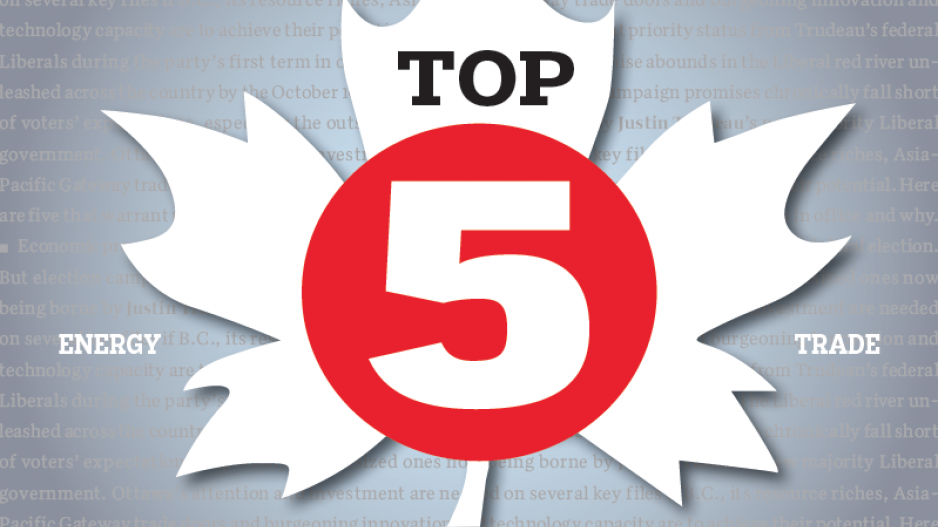Economic promise abounds in the Liberal red river unleashed across the country by the October 19 federal election.
But election campaign promises chronically fall short of voters’ expectations, especially the outsized ones now being borne by Justin Trudeau’s new majority Liberal government.
Ottawa’s attention and investment are needed on several key files if B.C., its resource riches, Asia-Pacific Gateway trade doors and burgeoning innovation and technology capacity are to achieve their potential.
Here are five that warrant priority status from Trudeau’s federal Liberals during the party’s first term in office and why. •
1) Energy
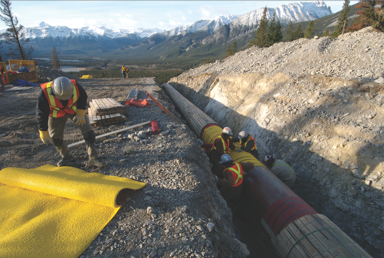 What | A federal government commitment to get landlocked Canadian energy to the global marketplace
What | A federal government commitment to get landlocked Canadian energy to the global marketplace
Why | Thanks largely to Alberta’s oilsands, Canada is the world’s fifth-largest oil producer, and energy – mostly oil – accounts for 25% of the value of Canada’s total exports.
But because Alberta’s oil is landlocked, Canadian producers get on average about $10 per barrel less – selling almost exclusively to the U.S. – than they would if they had access to global markets.
Without new pipelines, Canada is losing an estimated $30 million per day on that discount.
Despite the thousands of jobs and billions of dollars of spending and tax revenue that Enbridge Inc. (TSX:ENB) and Kinder Morgan Inc. (NYSE:KMI) say two new oil pipelines would generate in B.C., the Northern Gateway and the Trans Mountain pipeline projects have met stiff resistance in B.C.
First Nations that otherwise support pipelines for natural gas have launched legal challenges to both pipelines, and even the pro-business B.C. government has erected roadblocks to Enbridge’s Northern Gateway project.
The one ally the Canadian oil sector had – Stephen Harper’s Conservative government – is now gone, replaced with a new Liberal regime that has promised to kill the Northern Gateway project and overhaul the regulatory processes that approved it.
According to Kinder Morgan, its planned $5.4 billion twinning of the Trans Mountain pipeline would generate 4,500 construction jobs, $480 million in workforce spending and $14.7 billion in additional revenue for government.
Enbridge’s $6.5 billion Northern Gateway pipeline would create 3,000 construction jobs and 560 permanent jobs, and generate $1.2 billion over 30 years in tax revenue for B.C. and up to $1 billion in long-term benefits for First Nations along the pipeline corridor.
But B.C. would receive no oil royalties. The case against the pipelines here therefore has been that B.C. would assume most of the environmental risks while receiving few of the benefits.
And both the Canadian Environmental Assessment Agency (CEAA) and National Energy Board (NEB) processes have been criticized for becoming too politicized by the Harper government.
Liberal Plan | Justin Trudeau has stated that the Northern Gateway pipeline will not be built; however, he has said the Trans Mountain pipeline expansion might be approved, but only after it’s been sent back to the drawing board.
The Northern Gateway project was already approved by the NEB and CEAA, subject to 209 conditions. Should Enbridge meet those conditions, only to have the Liberal government kill the project, it could send a negative signal to the international investment community, said Ken Peacock, Business Council of BC chief economist.
Terry Beech, newly elected Liberal MP for Burnaby North-Seymour, has defended killing the pipeline project. He said the NEB process was widely viewed as “politicized by the previous Conservative government and needs to be revised.
“We campaigned very clearly on this. We were elected with a very strong mandate, and I expect us to follow through on our campaign promise.”
Jonathan Wilkinson, former CEO of clean-tech company BioteQ Environmental Technologies, is now the new Liberal MP for North Vancouver.
He said the main difference between Northern Gateway and Trans Mountain is where they terminate.
The Trans Mountain pipeline terminates in Burnaby. Northern Gateway would terminate in Kitimat, which raises the concerns of a potential oil spill on B.C.’s pristine north coast.
“We also objected to that pipeline because it ran through pristine wilderness areas, and we just didn’t think that was an appropriate place to be running a pipeline,” Wilkinson told Business in Vancouver.
The Liberals have promised to implement a permanent moratorium on crude oil tankers on B.C.’s north coast, which in itself would kill Northern Gateway.
The Liberals also plan to overhaul the CEAA and NEB processes. The overhaul will include provisions requiring those organizations to consider the carbon emissions from upstream activities – something that did not factor into the processes for either pipeline proposal.
The Harper government was accused of championing the pipeline projects and politicizing government regulatory organizations that are supposed to operate at arm’s length from government.
“It effectively changed these processes such that people didn’t think they were fair; they thought the processes were gamed,” Wilkinson said. “We need to establish that, in the public’s mind, there is credibility in the process; otherwise we’re never going to get to ‘yes’ on any of these projects.”
For Kinder Morgan, that means the company will have to redo some of the work it has done as part of the NEB and CEAA reviews.
“We will obviously try to ensure that some of the things that have been done in the current process don’t have to be fully duplicated, but they will have to go back and satisfy the requirements of the new process, including the need to build support amongst communities and First Nations,” Wilkinson said. “And thus far that project has not been able to do that.”
2) Transportation
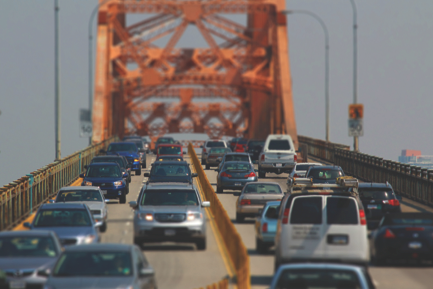 What | Investment in transit and goods movement infrastructure for Metro Vancouver and other urban areas of the province
What | Investment in transit and goods movement infrastructure for Metro Vancouver and other urban areas of the province
Why | Back in March, brewer Ben Coli brought a dolly of beer and a photographer onto a midday SkyTrain car to make a point: businesses need a reliable transportation system to get goods and services to market – and their employees to the office.
Coli, who works for Burnaby’s Dageraad Brewing, told Business in Vancouver congestion has gotten noticeably worse in the year since the business opened: “It’s just getting harder and harder to deliver beer around the city.”
While federal and provincial money has been relatively free-flowing for road and port improvement projects, it’s a different story for transit. Transit advocates have contrasted the provincial government’s willingness to spend millions on mega-bridges for Metro Vancouver with its requirement that the region hold a plebiscite on any new transit funding.
“We’ve got the furnace and the air conditioning on full tilt. You have to have some restraint in providing for the automobile in order to give transit a chance in the marketplace,” Ken Cameron, former manager of planning for Metro Vancouver, told BIV in a pre-plebiscite interview.
When, after months of campaigning, the plebiscite failed in June, the region was back to Square 1 on transit funding. Since 2012, measures such as a vehicle levy, a fare increase and increased property taxes have been nixed by various levels of government.
Projects like the Canada and Evergreen lines have gone ahead. But the region needs more: Surrey’s proposed three-line light-rail network, rapid transit along the Broadway corridor and more buses. While TransLink has juggled bus routes to deal with funding shortfalls, there’s no budget capacity to add more buses or routes.
The costs of congestion add up: trucks now spend 30% more time to complete trips, costing the economy $750 million a year, according to a BC Trucking Association study. Total costs of congestion for Metro Vancouver add up to between $1.65 billion and $2.25 billion a year due to wasted fuel, increased greenhouse gas emissions and lost time and productivity, according to a Business Council of BC analysis.
Time is not on the region’s side.
An estimated 1.4 million people are expected to move to Metro Vancouver by 2041, bringing an additional 700,000 cars with them. Population growth is shifting to south of the Fraser, which is least served by transit. The political stalemate has dragged on since 2012, and, at current levels of funding, TransLink projects service will drop to 2003 levels by 2020.
Liberal Plan | Increased infrastructure spending is a main plank in the Liberal platform, and the party plans to run $10 billion deficits each of the next three fiscal years to pay for it. While there are as yet no firm details on which projects will get funded, the party has promised to triple funding for public transit over the next four years and quadruple it over the next 10 years.
3) International trade
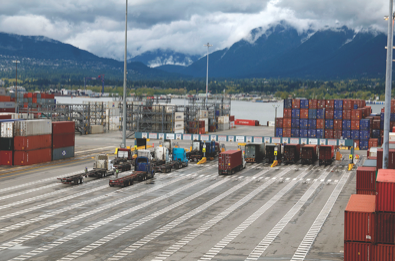 What | Trade and Asia-Pacific Gateway investment and financing options to keep B.C. ports competitive with their American counterparts
What | Trade and Asia-Pacific Gateway investment and financing options to keep B.C. ports competitive with their American counterparts
Why | The announced completion of Trans-Pacific Partnership negotiations during the federal election campaign underscored the new potential of freer Asia Pacific trade for Canada in general and B.C. in particular. Open access to a $27 trillion market will do that. But servicing demand through more open trade doors will require prudent and strategic investment in efficiency, innovation and infrastructure. For example, B.C.’s ports are major economic conduits for their regions, the province and the country; Port Metro Vancouver (PMV) is Canada’s busiest container port and North America’s third-largest port; Prince Rupert, recently ranked 10th overall in the Journal of Commerce’s top terminals in the Americas category of its global port productivity survey, was North America’s fastest-growing port in 2014.
But the challenges in leveraging their marketplace advantages and geography are many.
Approximately $700 million has been invested in PMV transportation infrastructure over the past five years, but to keep pace with port competition elsewhere in North America, PMV needs to expand its container handling capacity. Faced with depressed container-shipping rates, global carriers are forming alliances to maximize economies of scale and ordering larger ships that carry more containers but make fewer stops at fewer ports. That places huge pressure on port infrastructure and all connecting links in local logistic supply chains. PMV’s proposed three-berth Roberts Bank Terminal 2 is designed to handle the new mega-container ships, but the proposal remains under Canadian Environmental Assessment Agency review.
Peter Xotta, PMV’s vice-president of planning and operations, has pointed out to BIV that urgency in the speed at which it can deliver infrastructure improvements and expansion is critical to the port’s ability to compete for Asia Pacific business with Los Angeles/Long Beach and other major North American ports.
Canadian ports also need federal help in providing them with more flexibility in raising capital, which, under the Canada Marine Act, is restricted primarily to government programs like Building Canada.
As Wendy Zatylny, Association of Canadian Port Authorities president, told BIV in a recent interview, Canadian ports need more financial flexibility, because the biggest domestic challenge they face today is raising capital to fund infrastructure improvements needed to remain competitive with American ports, which, she pointed out, can issue bonds to raise capital and have more access to government funding than do Canadian ports.
Liberal Plan | Justin Trudeau has said that Canada’s economic prospects have always been tied to trade. But aside from stating that trade is vital “for our economy” and that “we will work to reduce the barriers that limit trade,” his party’s election platform contained few details on how it plans to address key trade issues.
4) Technology/innovation
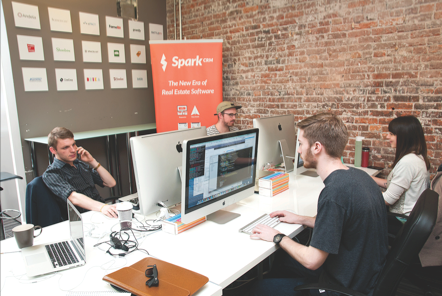 What | Federal government funding and other strategic assistance to attract more world-class talent and further leverage the province’s growing tech-hub potential
What | Federal government funding and other strategic assistance to attract more world-class talent and further leverage the province’s growing tech-hub potential
Why | Vancouver’s burgeoning tech startup scene has produced success stories like Hootsuite, BuildDirect, Global Relay and Vision Critical.
While these growing tech giants have been able to scoop world-class talent out of Seattle and San Francisco – tech hotbeds that generally offer higher average salaries – early-stage companies have long struggled to recruit qualified middle and senior managers.
Highline CEO Marcus Daniels, whose accelerator invests capital in startups and helps them grow through mentorships, networking opportunities and free office space, said the Liberal majority needs to begin leveraging B.C.’s relatively low overhead compared with other tech hubs to attract the world’s best engineers.
“I know that’s a complex matter, but I think the government needs to recognize this is how we will compete with the biggest and most established startup hubs,” he said.
BC Technology Industry Association president Bill Tam said a major issue stymying the inflow of the world’s best talent is recent changes to the temporary foreign worker (TFW) program.
He said the new government needs to re-examine policies that have closed the door to well-paid skilled immigrants looking to fill vacant spots at tech firms operating in talent-starved Vancouver.
“The answer to a lot of our problems is talent,” said Vancouver-based angel investor Boris Wertz.
The founder of Version One Ventures told BIV he found the Conservative government receptive to the needs of the tech community when he worked with it on Canada’s Startup Visa program that allowed qualified foreign entrepreneurs to immigrate to Canada permanently.
“The more entrepreneurial, smart, hard-working people you have in a country, the more they will drive the economy. The challenge is there is no government that can have any impact on that in the short term. This is long-term investing.”
The Business Council of BC said in an October report there is a legitimate place for Ottawa’s TFW program but the new government should separate it into three categories: seasonal workers, foreign workers needed to fill jobs in remote communities and well-paid workers who possess specialized skills “that employers in Canada require to succeed and to grow.”
One of the other big recruitment issues is the Liberals’ promise to increase taxes on stock options to 100% from 50%.
“It’s definitely a challenge in relation to making sure the right incentive drivers are there for startup companies,” Tam said.
Tom Mulcair’s New Democrats backtracked slightly on an earlier promise to tax stock options at 100% after the national tech community balked at the plan. The party later announced the plan would not apply to startups.
The Liberals, meanwhile, have promised stock options would be taxed at 100% only if the compensation amounted to more than $100,000.
“I would hope that there’s an appetite in the government to continue the dialogue with industry as to what the levels should be and what would be appropriate to set out there,” Tam said.
Wertz added that it’s going to be more challenging for startups to attract top talent if stock options are taxed at 100%.
Liberal Plan | The party has earmarked $900 million over the next three years for its “new innovation agenda.” The plan will fund more tech incubators to help entrepreneurs, but the Liberal platform does not delve into how talent-starved tech ecosystems will recruit qualified workers. The incoming government has pledged to spend $775 million annually on job and skills training, but there’s no word yet on how any of it will be spent on innovation-related fields.
5) Human resources/immigration
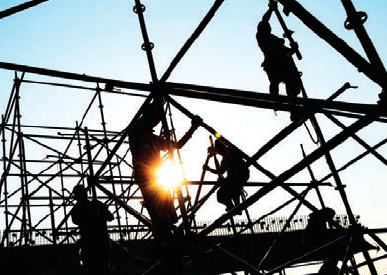 What | Better labour market data and intelligence to secure the right human resources needed to build the economy in B.C. and across the country
What | Better labour market data and intelligence to secure the right human resources needed to build the economy in B.C. and across the country
Why | Something strange has been happening to B.C. immigration numbers this year: they’ve fallen off a cliff. Immigration lawyer Richard Kurland thinks the reform of the temporary foreign worker program is playing a big part in the decrease.
“It’s all about the temporary foreign workers leaving Canada,” Kurland, a partner with Kurland, Tobe told Business in Vancouver earlier this month. “There are also no new temporary workers coming in.”
For a decade, the Conservative government allowed the TFW program to expand and apply to more kinds of workers, from highly skilled tech workers to low-skilled restaurant workers. Workers were allowed to stay for four years, and then to reapply. Many aspired to immigrate permanently to Canada.
New restrictions on the use of TFWs came into effect in June 2014 after media stories detailed abuses of the program. Examples included allegations of employers withholding wages from temporary foreign workers and disregarding applications from qualified Canadians. At the same time, the number of TFWs ballooned, especially in B.C. and Alberta, while permanent resident numbers remained flat.
Unavailable still is the detailed labour market data experts say is needed to craft a fair TFW program that fills labour gaps, and some business groups have argued that the TFW program should be reformed to make it easier for low-skilled workers to stay in Canada, a path that had been open to highly skilled TFWs.
Along with the rest of the country, B.C. faces the challenge of an aging workforce and increased burden on health care while economic growth is predicted to be modest at best in the foreseeable future.
Young people entering the workforce today are dealing with a different reality than their parents faced: they have higher post-secondary education debts, earn less then their parents did and must pay “hundreds of thousands more for the privilege of living in an average home,” according to University of British Columbia professor and political activist Paul Kershaw.
Meanwhile, despite Canada having one of the best-educated populations among Organization for Economic Co-operation and Development member countries, businesses continue to complain of a “skills mismatch” between the jobs they need to fill and the workers available.
And there are populations who have been left out of the workforce: First Nations communities continue to have higher unemployment and lower high school completion rates than their non-indigenous B.C. counterparts. Canadian women currently make 20% less than men and, in B.C., fill just 6.6% of corporate board seats compared with the 17% national average.
Liberal Plan | The Liberals promise to reverse what they say was the Conservative trend to “reorient [Canadian immigration] away from welcoming those who choose to make Canada their new and permanent home,” targeting the expansion of the temporary foreign worker program as evidence of this direction. The Liberal platform promises to accelerate processing times for Express Entry, an economic immigration category many businesses hoped would make up for the lack of the temporary foreign worker program. Other promises include a $1.5 billion annual increase in skills training, including a $50 million increase to an existing aboriginal skills training program and increased funding for youth employment programs.•

